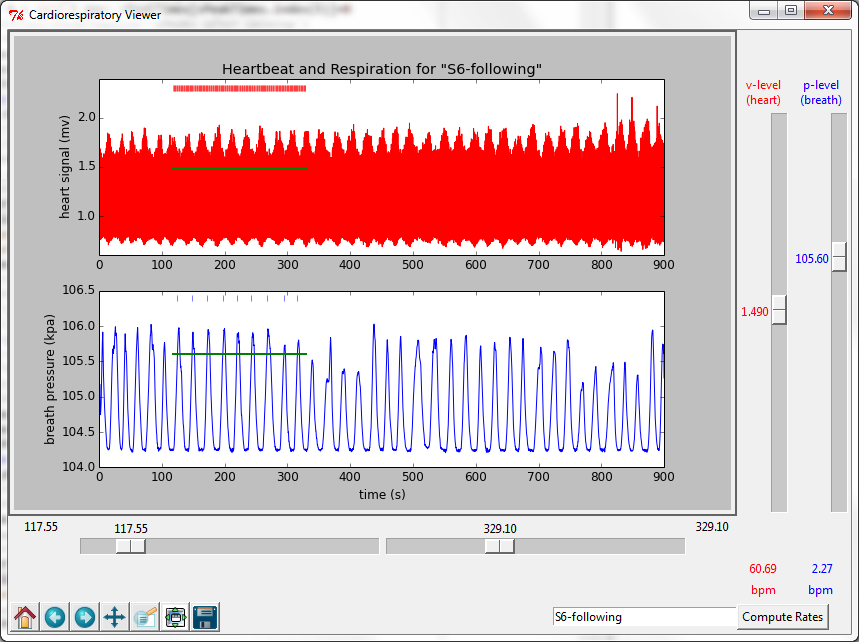In September 2014 I enrolled in an online course Exploring Neural Data offered by Brown University via coursera.org. The basic premise of the course was that students would be able to access data coming from various neuroscience labs around the country and learn techniques for analyzing that data, forming hypotheses and testing them. Participation in the course required learning the Python programming language. It sounded like an opportunity I couldn’t pass up. I had already completed two coursera online courses, Duke University’s Medical Neuroscience and Hebrew University of Jerusalem’s Synapses, Neurons and Brains, which gave me a bit of orientation to neuroscience (my background is physics and astronomy). I also discovered some good online tutorials on Python, so I could start familiarizing myself with a new language.
The final project for the Exploring Neural Data course was to apply some of our programming skills to a new data set. I chose to collect respiration and and electrocardiogram (ECG) data for subjects during meditation and reading. I chose to develop a new application I called the Cardiorespiratory Viewer. Written in Python, using the Anaconda Spyder programming environment, it imports program modules from the Tkinter, numpy, scipy and matplotlib libraries. The application reads data files generated by the LabQuest recorder, displays simultaneous plots of EKG voltage and breath pressure, and enables the user to specify time segments and signal threshold levels for analysis.
PDF for final project, Exploratory Investigation of Cardiorespiratory System during Meditation
